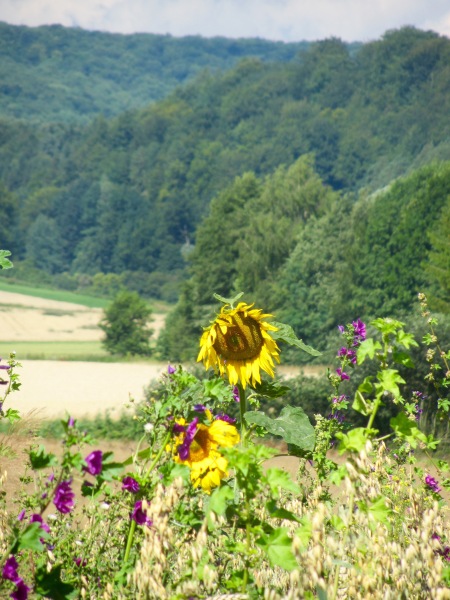Today, the German Ministry for Food and Agriculture published the press-release No. 191 with the full-dataset on the registration of ‚Ecological Focus Area‚ by farmers in 2015 in Germany. The data mainly confirm the rather low impact of greening and ecological focus area on biodiversity.
Overall, ecological focus area have a share of 11.5% of the total arable land in Germany. As already mentioned in the last post, farmers use the full set of options, but with a strong emphasis on the production options. Catch crops and under sawn crops are the most important options (68%), followed by fallow land (16%) and nitrogen fixing plants (12%). The two interesting options for biodiversity and ecosystem-connectivity, buffer strips and landscape elements have a share of only 3.6% of the ecological focus area. But to see the full effect for agro-ecosystems, we need to see the share of buffer strips and landscape elements to the sum of arable land, which is 0.42%. This is from a biodiversity perspective simply disappointing. Fallow land might also have a limited positive effect on biodiversity, but strongly depending on the seed-mixture and the location of the fallow land within the region.
| Type of Ecological Focus Area | Area in hectares |
| Fallow land | 221,8 |
| Bufferstrips | 16,5 |
| Landscape Elements/ Terraces | 33,0 |
| Catch crops / Undersawn crops | 930,2 |
| Nitrogen fixing plants | 161,8 |
| Short forestry plantation | 2,2 |
| Afforestation | 1,9 |
| Sum of Ecological Focus Area | 1367,4 |
Source: Ministry for Food and Agriculture, Press-release, 08.10.2015
According to the German Minister for Food and Agriculture, Christian Schmidt (CSU), farmers „create additional environmental services“ and it was a good choice, to offer multiple options for farmers. I think, this is a quite optimistic view, but of course subject to a debate on the topic. From my perspective, the analyses and statements done it the my previous blog-posts are mainly confirmed. The implementation of greening and the ecological focus area are disappointing from a biodiversities point of view. If we argue with the efficiency of tax-payers money, the payments in agri-environmental are more efficient to support biodiversity services from farmers. The actual data on greening bring a lot of arguments to lower the level of direct payments in pillar I. and increase the financial volume of the agri-environmental programs in pillar II. – at least from a scientific point of view and of course from a German perspective.
So the debate is open, I am looking forward to your comments!
Schlagwörter: CAP-Reform 2013, Ecological Focus Area, Germany, Greening, implement

12. Oktober 2015 um 14:00 |
[…] his blog post of 8th October, Sebastian Lanker, using data from the German Ministry for Food and Agriculture , which essentially […]
LikeLike
20. Dezember 2015 um 22:18 |
[…] The most prominent example for public goods are environmental services by farmers. If we apply this criterion on the EU’s Common Agricultural Policy (CAP), the direct payments in pillar one (P1) are not well targeted to public goods: In the CAP-reform 2013, the EU-commission attempted to link direct payments to environmental objectives, using the new concept of ‘Greening’, which so far shows almost no effect on biodiversity (See the paper of Guy Pe’er 2014 in Science). Even the most promising element of Greening, the concept of ‘Ecological Focus Area (EFA)’ was watered down in the negotiation process. Finally, in the implementation, 2015 farmers can use the less costly but also less effective measures, which will have almost no effect on biodiversity (see the post on the German data on ecological focus area 2015). […]
LikeLike